« Köln (Cologne) | Main | Karneval in Köln »
February 11, 2007
Africa
OK, let me start with: this post is atypical and REALLY long. I am posting images that were originally film. These are from my trip to Africa back in 2001. However, the overall experience was an epiphany for me. Although I had traveled abroad before, it was on this trip that I discovered my love of learning about and understanding different cultures. The first vehicle for this discovery was a trek up Mount Kilimanjaro. For those who aren't familiar with this mighty peak, it's about 200 miles south of the equator in the sub-Saharan African country of Tanzania. It was probably first made famous in the collective mind of the western world by Ernest Hemingway and his novels about the mountain and native peoples and colonial life in Africa.
My cousin, Chad, joined me on this incredible journey of discovery. As you can see here, we began in a tropical jungle. It was interesting to note that the trail was better maintained than many roads in Tanzania.
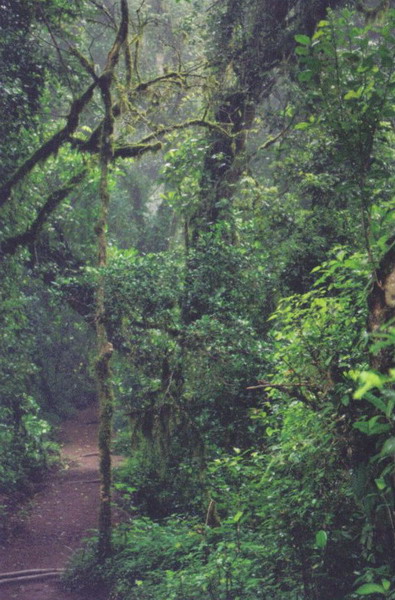
We soon emerged into a more traditional alpine steppe. In fact, we went through a number of climatic zones, with a glacier on the very top (the picture is later). :-) This was one of our first views of the peak.
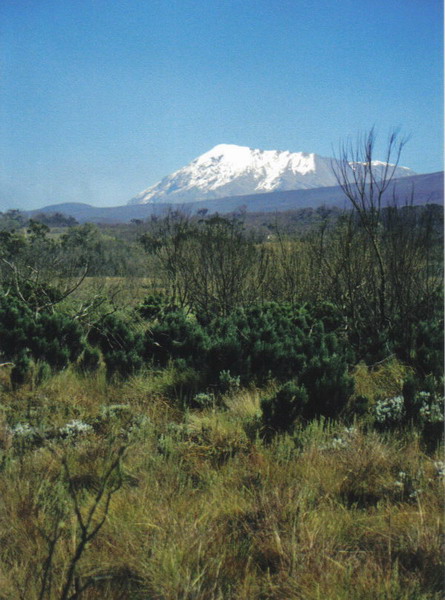
We climbed the traditional Marangu route. This is the most common route, which took us 5 days, and is consequently known as the Coca-Cola route (probably because it is the most popular). In this image, we are looking back of one of the camps we stopped at. Even though this is not that high, it's already above the clouds. That is because Mt Kilimanjaro is the largest free standing mountain in the world. It rises to a height of 5,895 meters (19,340 ft).
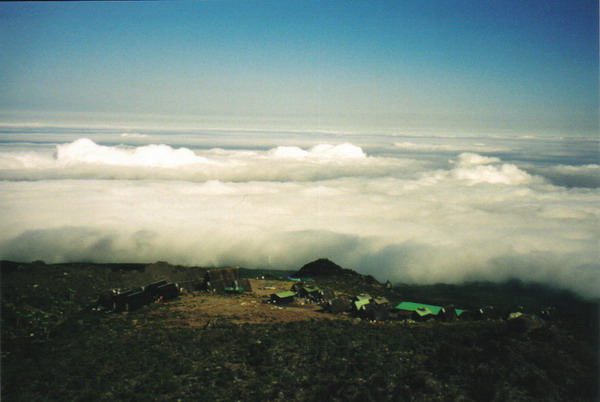
You can see in these next two images we stopped to take a break at an altitude that was almost as high as the highest mountains in the lower 48 states of the US. You can see we're at about 13,500 feet above sea level and for reference, the highest peak in contiguous US is Mount Whitney in California at 14,505 feet. In fact, later that night, the hut we stopped at (the Kibo Hut) was about at 15,500 feet.
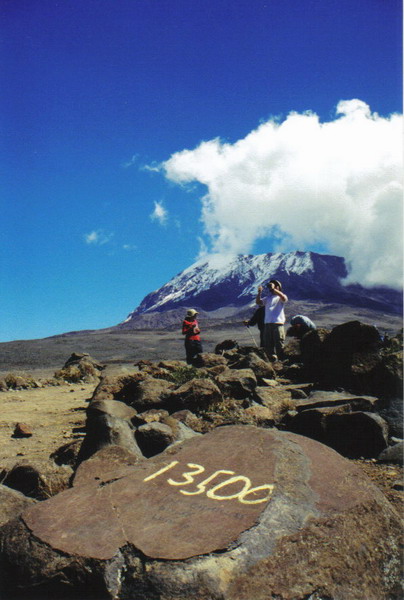
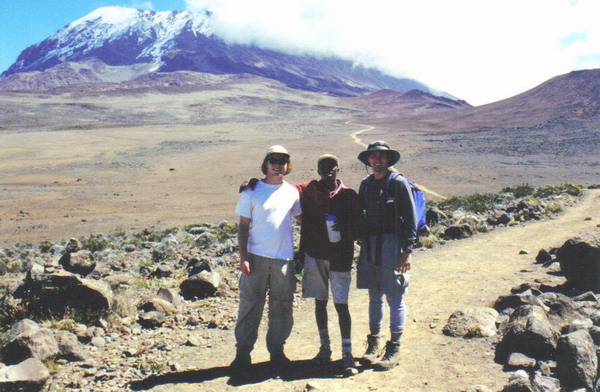
We left Kibo Hut at about midnight for our final ascent to the summit of Mount Kilimanjaro. The goal was to reach the peak by sunrise. Unfortunately, our guide didn't quite time it right and we were a little below the crater rim (Kili is also a volcano with magma active only 400 meters below the summit ... although it is still considered dormant). This is an image of the glacier on the crater. Although it has diminished in size over the last few years (some people attribute that to global warming), it is still very pretty to see. Keep in mind that we're only 200 miles south of the equator!
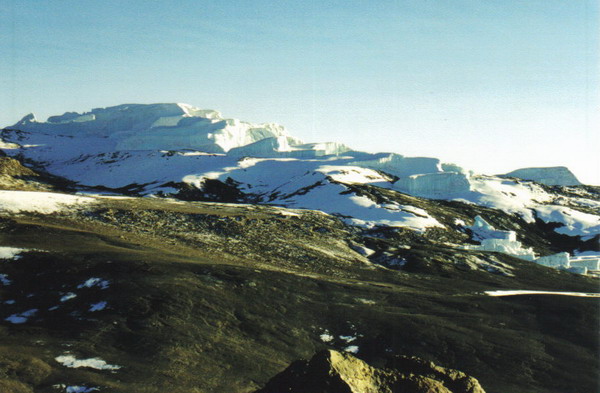
This is the highest point I've been (and still in contact with the Earth) at just over 19,000 feet.
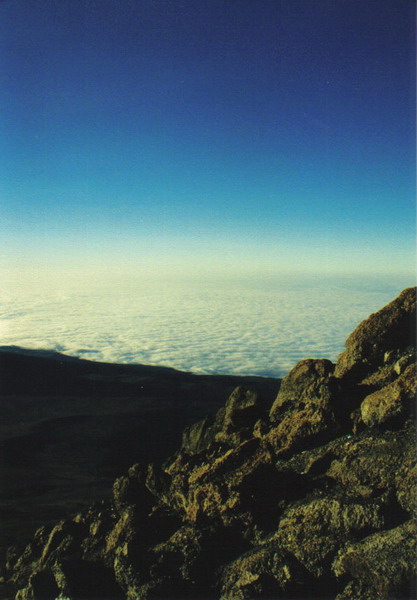
After our successful climb of the formidable mountain, we went back to the city of Arusha. We stayed in the city for several days with the family of one of my classmates in college. This was a great way to get a feel for local life. We explored the markets and sights of the city. In many ways it is a modern city. However, since there is a fairly small middle class in this city of 270,000, all the people who would normally work in offices, were out in the streets. Many people were subsistence farmers or laborers. However, while their income was perhaps meager compared to the industrialized world, everyone we met was quite happy (or at least so it appeared to us). One thing both Chad and I wished we had brought were pens. All the children seemed to be in want of writing utensils and I lost count how many times we were asked for them. So, if you happen to travel to the region, remember to bring something small to hand out to the children!
After we had recuperated sufficiently (about three days), we headed out to Serengeti National Park. On the way, we stopped by a Masai village. It was a fascinating interaction. Although I am sure there are many tourists who visit these semi-nomadic people, we were the only ones there that day. The Masai are one of the 128 tribes that make up the people of Tanzania and are the only ones who have largely resisted western influence to adhere to their traditional dress and lifestyle. Perhaps that is why they are one of the best known tribes
of Africa.
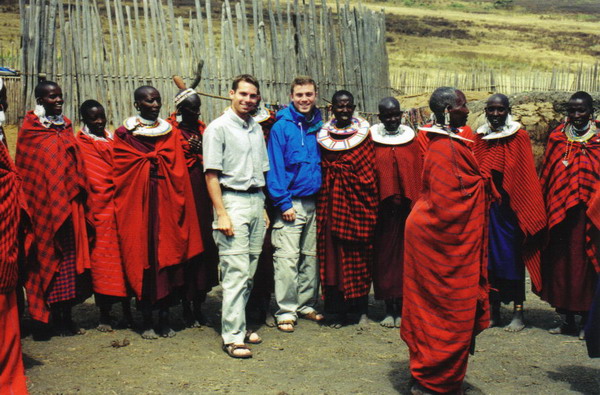
The villagers came out to sing and dance. The men were singing about the joys of marriage and their dance included jumping as high as a NBA superstar.
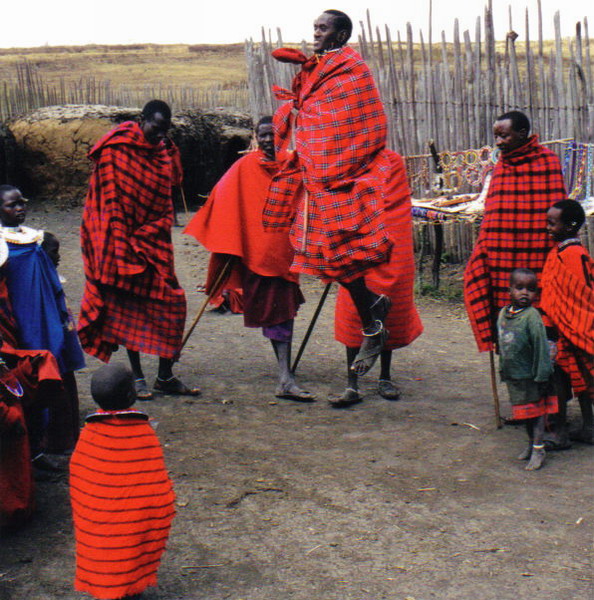
We had a chance to talk to the chief/leader (he was elected by the village) and he showed us his home. The huts are made of mud and cow dung. He shared with us that on special occasions, they would drink milk from their cows and mix it with a little blood. Yum.
Although the flies are ubiquitous, people and animals seem to have grown accustomed to them.
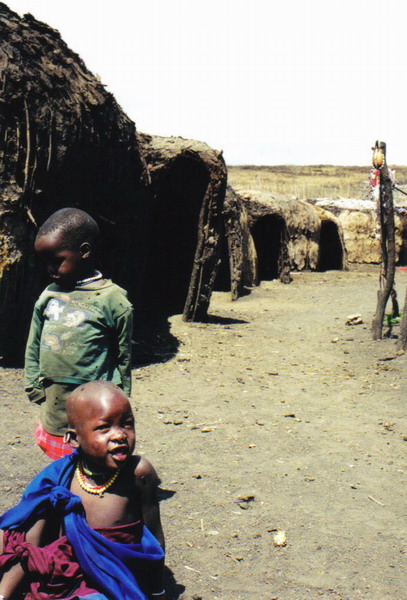
After we left the village we made our way over to Serengeti National Park with the most incredible display of wildlife I have ever seen. In fact, the experience has ruined me from ever enjoying a zoo again. It was truly spectacular to see these amazing creatures in their native habitat (relatively) undisturbed by human influence. Chad and I headed out with our driver/cook and guide in the quintessential safari vehicle: a Land Rover with an open top to stand and watch the wildlife.
The "Big 5" of the Serengeti are 5 species of wildlife that are most sought after:
1. Lion
2. Leopard
3. Rhino
4. Elephant
5. Cape Buffalo
The only species we didn't have the pleasure of watching was the rhino. In fact, my favorite animal wasn't even on the list. It is the cheetah (or Duma in Swahili). As I recall, we saw five or six of these magnificent predators on our safari.
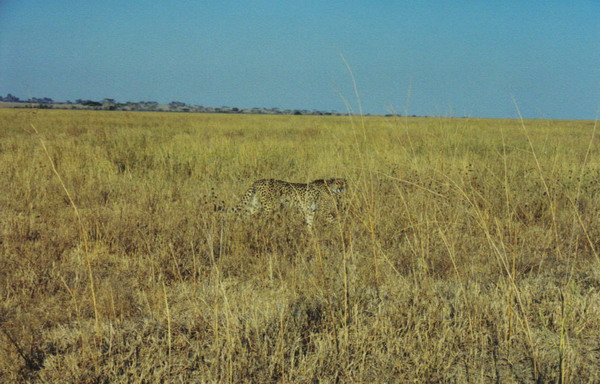
How much Swahili do you know? I bet you at least know how to say lion. It's simba (just like the character in the movie) and no worries is actually hakuna matata (literally translated it means "there are no worries here").
Lions truly are the kings of the Serengeti. They have no fear of any other animal (including humans). You can clearly see the lion's powerful muscles in this adolescent male.
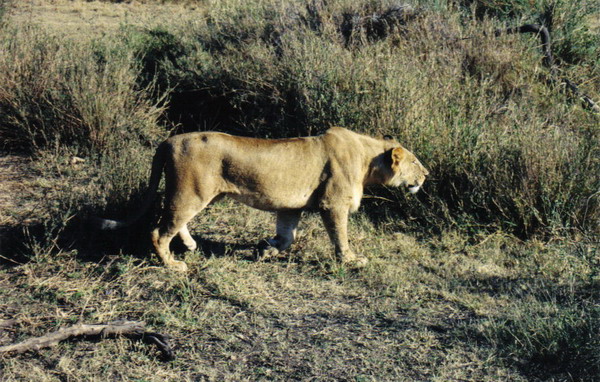
This is a group of male impala (much more fun to watch than the version produced by Chevrolet).
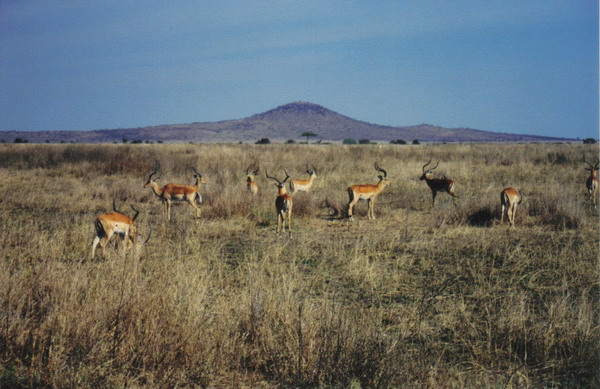
These plains elephants were also fun to watch saunter through the Savannah.
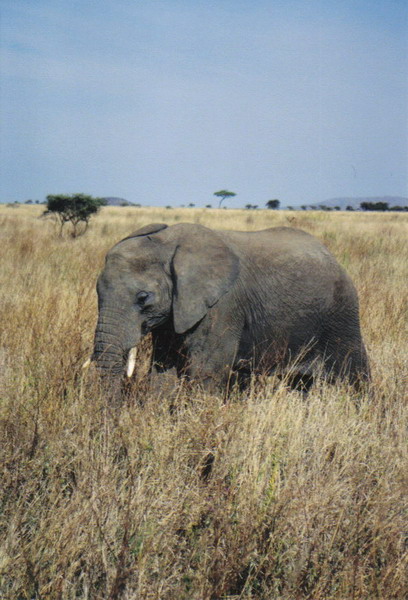
This is one of the few places we got out of our vehicle. We watched these hippopotamuses in the water. The name hippopotamus means "river horse." We saw many of these animals on our trip and on land they looked large and lumbering, but in the water, they were perfectly at ease. However, since they look fairly docile on land, people have a bad habit of approaching too close. Although they are most at home in the water, hippopotamuses can be very aggressive. This combination has made them the most deadly creatures in Africa. So, don't get too close!
This group stayed together as for protection, with the young ones in the middle. When crocodiles (7-8 were resting on the bank) got in the water and swam too close, the hippos jumped as a group to warn the crocs that they were getting too close. This one shows his imposing dental array.
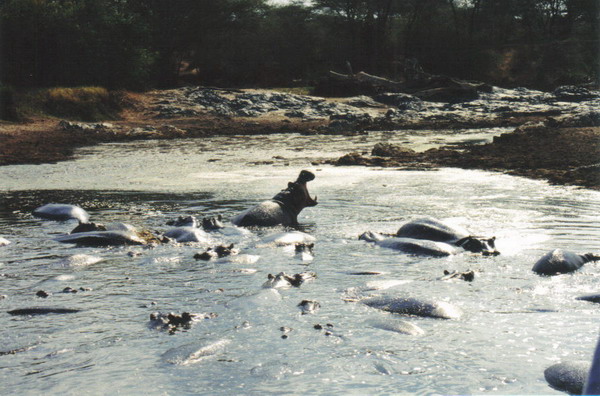
The tallest land animal, with his two meter (six feet) long neck needs no introduction, but it's interesting to note that it has the same number of neck vertebrae as humans with six.
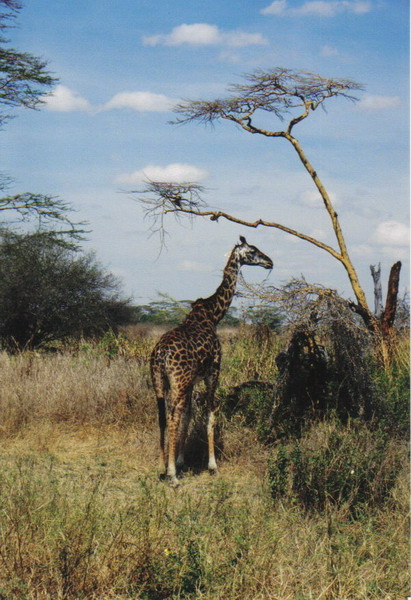
This zebra stopped and posed nicely in front of an acacia tree.
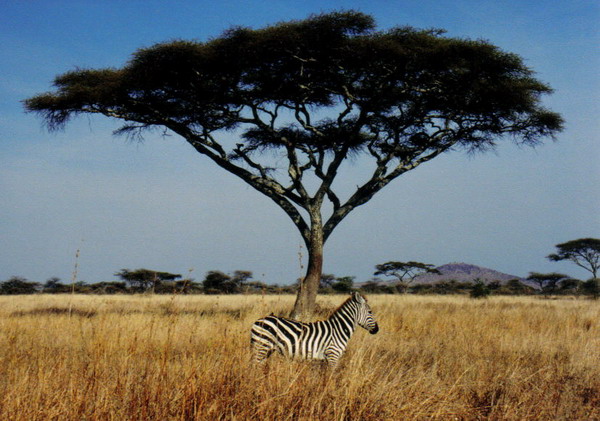
These lionesses are certainly the queens of the land. The scariest experience (for me at least) on the whole trip happened while we were camping out on the plains of the Serengeti.
Imagine this, we were in a campsite with a ring of tents about 50 meters across. The tents were made of the normal, thin nylon fabric. As our cook was preparing the meal, Chad and I decided to take a walk around the area to explore a little. As we walked away, our guide mentioned that if we left the safety of the circle, we would be dinner for the animals. So, we quickly reconsidered the scope of our exploration. When night fell and we were ready to turn in for the night, our guide explained to us that he and the driver/cook would sleep in the vehicle and if we had to go to the bathroom during the night, we should just open the tent and relieve ourselves out of the door, but not leave the tent, lest we risk our lives. But, we were not to worry too much, because the animals wouldn't come through the very secure nylon of the tent.
With that thought in mind, we went to bed. Throughout the night, I awoke to the sounds of animals walking right past my head (just on the other side of the sturdy nylon wall). Then, the scariest sound I've heard came from what sounded like right across the camp. It was the cry of a lioness as she patrolled her vast territory. Although I thought she was right outside our tent, it turns out she was about three kilometers away. That knowledge didn't allay my concern at night though!
Here are a few of those lionesses, perhaps one was the one I heard...
Next stop on our itinerary was a visit to the Olduvai Gorge in the Great Rift Valley. The gorge is one of the most important sites of paleoanthropology in the world and is often considered the cradle of mankind. Here the Leakey family has done a great deal of significant research throughout the 20th century (and work continues to this day). Interestingly, it is here that the oldest evidence of human consumption of mammoth was found. This dates back 1.8 million years ago to Homo Erectus.
After our journey through the Serengeti and the Olduvai Gorge, we headed to another natural wonder, the Ngorongoro Crater. It is a volcanic mountain that collapsed in on itself 2 million years ago, creating a effective barrier to the outside world. The rim of the crater stands 600 meters above the crater floor. The sides are incredibly steep and provide a great vista of the world's largest unbroken caldera and home to over 30,000 animals. Unfortunately, I don't have any pictures from the top, nor the beautiful lodge we stayed in, the Ngorongoro Crater Lodge, perched right on the rim. I think the best part of staying there was the hot shower we enjoyed. Although we had been able to bathe regularly, this was our first "western" shower in over two weeks.
On the crater floor, we followed the hyenas to the wildebeest they had killed. It was also an interesting social lesson. If lions had been present, they eat first (even if they didn't kill the prey). Next, (and the hunter in this case) were hyenas. After they had their fill, the vultures and smaller carnivores picked the bones clean. It was a fascinating process and we were captivated as we watched the drama unfold.

There were numerous large herds of Cape Buffalo as well. Our guide decided to take us right through this long caravan of them. They looked a little resentful of the interruption (and perhaps wasn't the nicest thing for us to do), but we continued on the road and the herd soon got back together, with no further apparent concern.
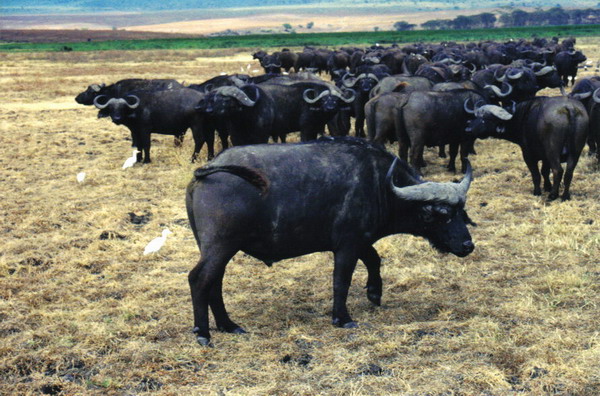
This zebra was kind and stopped to pose for the camera as we passed by.
These zebra butts were a fitting end to the safari. :-)
We again returned to Arusha for a little more shopping/bartering, then another scary bus ride (in a 15 person mini bus) back up to Nairobi for two more days of adventure. We had spent a day there on the way down as well. This time, Chad and I went to probably the best wild game restaurant I've ever been to: the Carnivore. They brought us a never ending supply of meat from the animals we had just seen on the safari. We ate and ate and when we finally were satisfied, we laid down a flag to signify that we had had enough (reminded me of surrendering). My personal favorite meat was the ostrich. Nairobi is an interesting city of over 4 million residents, but it is a little scary to walk down the streets. We heard from many people that we were liable to be robbed if we walked from site to site, so we opted for a taxi and had no problems at all. After the two days there, Chad returned home and I continued on to Egypt.
My trip to Egypt was unique in that it was my first overseas expedition I undertook by myself. However, I have to admit that I opted for a tour that was just about all inclusive. A guide or driver was with me almost all the time. Since I had less than a week to explore, I also chose to stay in Cairo. Next time, I would love to go out to the Red Sea for a little SCUBA, and down the Nile to more fully immerse in the culture.
Of course, the highlight of my time there was seeing the Great Pyramids on the Giza Plateau (just outside of Cairo).
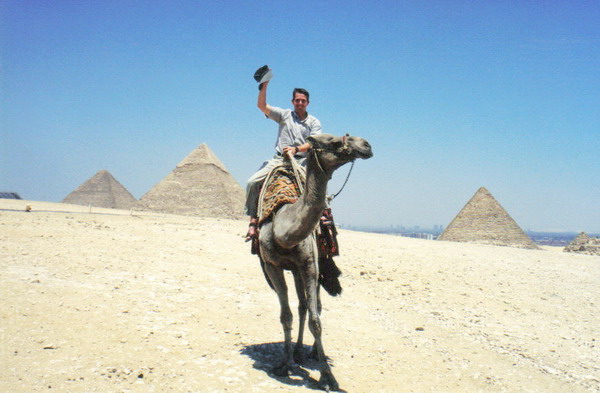
Of the Seven Wonders of the Ancient World, this is the only one remaining. If you're curious, here is the list which was finalized in the Middle Ages:
1. Great Pyramid of Giza -- a tomb for the Egyptian Pharaoh Khufu built around 2560 BC (that's over 4,500 years ago and it was the tallest structure in the world for 43 centuries!)
2. The Hanging Gardens of Babylon -- built on the banks of the Euphrates river by King Nebuchadnezzar II, believed to be 50 km south of Baghdad, Iraq, but very little is actually known about the gardens although they are thought to have been built ~600 BC.
3. The Statue of Zeus at Olympia -- the giant statue of the Greek father of the gods, survived from 450 BC - 462 AD when it was destroyed by a fire.
4. The Temple of Artemis at Ephesus -- a beautiful temple built in honor of the Greek goddess of hunting and wild nature built in 550 BC and destroyed by an arsonist in 356 BC (on the same night Alexander the Great was born. It was rebuilt, but finally destroyed in 401 AD.
5. The Mausoleum at Halicarnassus -- a tomb constructed for the Persian King Maussollos, built in modern day Turkey around 350 BC. It was dismantled by invading crusaders in 1522 AD to build their castle, which still stands today.
6. The Colossus of Rhodes -- colossus of Helios the sun-god, erected by the Greeks near the harbor of a Mediterranean Island, built in 282 BC until toppled by an earthquake 226 BC. It was further dismantled and sold in 654 AD. It is possible that this 33 meter high statue inspired the artist who created the Statue of Liberty.
7. The Lighthouse of Alexandria -- between 115 - 135 meters high and built around 250 BC, surviving until swept away by earthquakes and construction of a new fort in 1480.
The tomb of the Pharaoh Khufu was simply magnificent. You can see in this image, the blocks of stone are enormous. They are as much as 80 tons each. When Napoleon's army visited at the turn of the 18th century, his engineers estimated there were enough stones to build a three meter high wall around all of France. In fact, it is nearly perfect in its construction. Its base is a perfect square with a mean error of only 58 mm and 1 minute in angle. Also, the sides point to each or the cardinal directions and interestingly, the side that points north is not to magnetic north, but to true north. The height of the great pyramid was 146.6 meters high, when its polished marble casing was still intact. The exterior of these buildings is spectacular, but the interior was only intended to house the remains of the pharaoh. I toured the inside of the smallest of the three, the Pyramid of Menkaure. It was impressively austere inside, although a fascinating tour.
The builder of the third (and smallest pyramid of the great three) is also thought to have built the Great Sphinx. Although this half man, half lion statue is one of the largest single-stone statues in the world, guess how tall it is?
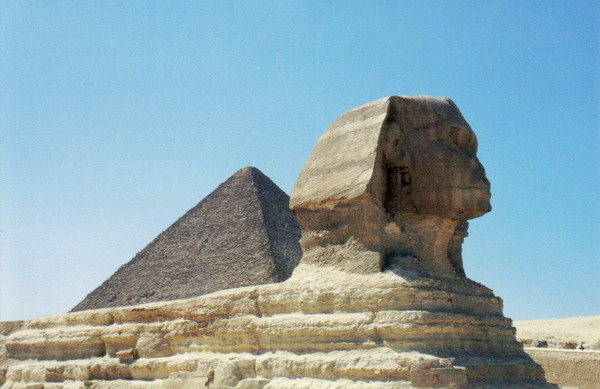
From the base to the head is 65 feet. However, the part that is visible is only 10-15 feet high (as you can see below). While it was very impressive to know it is so old and carved from a single stone, it was much smaller than I expected. Perhaps because the perspective is often with the sphinx in the extreme foreground and the Great Pyramid in the background, it appears nearly the same height. My misconception was so great that when my guide said, "And here is the Great Sphinx" I replied with, "really?? But, it's so small..." Hopefully, if you go see it, this will better prepare you to appreciate it. Also, I watched a laser light show on the side of the Sphinx that was most interesting and informative (I highly recommend it).
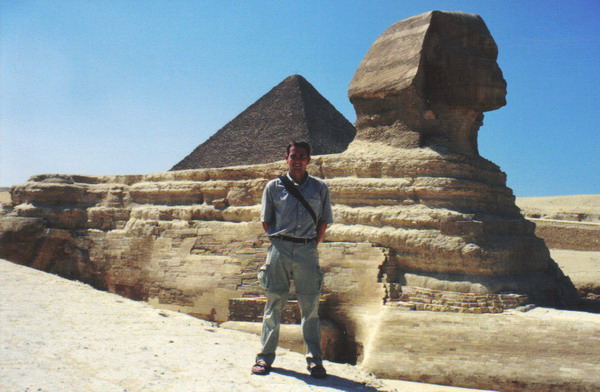
This perspective gives you a better idea of the relative sizes of the two monuments.
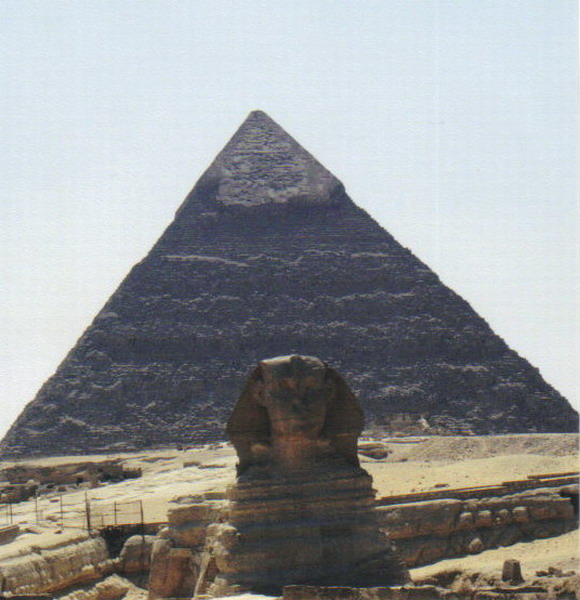
With that, I concluded my grand first tour of Africa. I subsequently returned to Tunisia in 2004, but this was the great awakening of my passion for travel and cultural understanding.
--Jim
Posted by jim at February 11, 2007 04:28 PM
Comments
Jim!
Great post on Africa. I really enjoyed all your pictures and commentary. In fact, after looking at the images from your trip I'm inspired to return...I look forward to traveling with you this weekend.
Andy
Posted by: Andy at February 23, 2007 02:26 PM